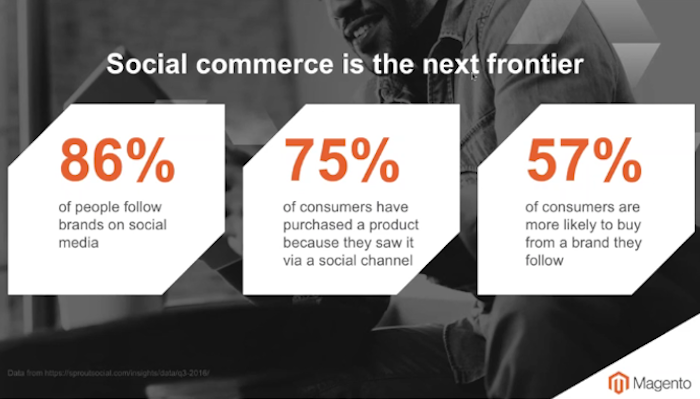Magento 2.2 New Feature Highlights
Magento, one of the pioneer platforms for ecommerce, is finding new momentum in its latest version, Magento Commerce 2.2. In recent years, Magento has met tough competition from other platforms, especially as Shopify Plus and Big Commerce have risen in popularity. At the same time, the thinking has been that Magento 2 is so different from its previous versions that it is almost like re-platforming. So, if a merchant is unsatisfied with Magento for any reason, why not jump to another platform now? Maybe so…or maybe not.
Related: How Apple 2017 Impacts Ecommerce
Magento released its version 2.2 earlier this month. They recently hosted a webinar to outline the platform’s new features, and let’s just say, Magento 2.2 is up to the competition. The company has listened to merchant feedback, and now offers the fix. Here are three of the top new feature highlights in Magento 2.2.
Fraud Protection with Integrated Signifyd

Fraud drains time and money from online retailers. Magento reports that it’s at an all-time high with a 26% increase in merchant losses year-over-year. Yet there’s another upsetting stat: last year online retailers lost approximately $10 billion in dismissing real orders. Ecommerce retailers are so concerned about fraud (understandably so) that they decline perfectly good orders.
To fight both strains of fraud–real and perceived–Magento Commerce 2.2 debuts an integration with Signifyd. This company operates under the mission “to make commerce safer for online retailers.” They are currently the anti-fraud protectors for over 5,000 online stores.
Now their services come bundled into Magento Commerce 2.2. As a result, merchants will have a 100% guarantee against fraud. Signifyd does this through machine learning; it reads the transactional data thousands of online stores to pinpoint fradulent activity.
The Signifyd integration has two major benefits for retailers on Magento: 1) Signifyd takes 100% responsiblity for any fraudulent purchases and 2) merchants no longer have to manually review potentially bad orders. Signifyd automatically reviews all purchases and approves or denies accordingly.
Magento Social Commerce

The social commerce addition isn’t as revolutionary as the Signifyd integration, but it’s still really useful. Magento Commerce 2.2 can automatically create a replica of your store on Facebook. It’s like opening a new location on a street with heavy traffic. Ecommerce retailers get to take advantage of the millions of eyeballs on Facebook everyday, while populating their Facebook store with the products they sell on their home site.
Take a look at the Karbon Speed store on Facebook. It’s like any company page, however, in the left column, it reads “Shop Now.” When you click on Shop Now, you’re taken to another Facebook page loaded with Karbon Speed’s catalog of products. The items for sale are instantly recognizable from the Karbon Speed home site.
With this new feature, Magento gives retailers access to a huge new audience of buyers without any extra effort on the retailers’ part.
B2B Capabilities in Magento Commerce 2.2

Magento Commerce 2.2 creates its most robust changes for B2B (business-to-business) sales. To give some background, the company explains that more businesses are selling both B2C (business-to-consumer) and B2B these days. Magento has long excelled at B2C, and now they’ve doubled down on their B2B infrastructure.
Just like we shared recently, B2B buyers are influenced by the mainstream online shopping experience. Increasingly, business buyers want the procurement process to be as seamless as buying from any popular consumer store online. In fact, Magento reports that 38% of business buyers want to be able to make their purchases outside of traditional work hours. And, as shown above, 71% of these buyers would switch suppliers if the new supplier offered similar pricing with a better online experience.
To answer this call, Magento has introduced several B2B enhancements. On the merchant side, B2B retailers can set up company accounts. These accounts allow for multiple buyers within a company, and the retailer can designate roles and permissions for each person within a client company. Retailers can also assign specific product catalogs and price lists to their buyers.
Additionally, retailers can encourage B2B buyers to purchase by assigning a credit account to them. The retailer sets the credit limit (and currency) and continually decides whether or not to extend that limit.
For B2B buyers, Magento gives them a new sense of self-sufficiency. Buyers can submit requests for order quotes, as well as track their orders and credit account status. They can also place orders by uploading a CSV file of numerous SKUs or simply click “re-order” to restock supplies.
The new “My Quote” tool helps retailers and their buyers. Buyers send in their request for a quote, and the retailer responds within the platform by specifying the prices and setting the quote expiration date, for example. As the seller and buyer negotiate, the platform saves the entire quote history. Now retailers can review past negotiations when the buyer comes back for another order.
In Conclusion
Underlying all these new features, Magento has also improved its performance engine. The platform now guarantees faster indexing and smarter caches. They’ve also built a better pipeline for site changes–with this new release, Magento claims merchants can update their site in under a minute.
At the dawn of ecommerce–more or less 15 years ago–Magento reigned as the leading ecommerce platform. It never lost its leadership status, however, several newcomers joined the circle. Now with Magento 2.2, the company secures its place in the pantheon of platforms for a long time to come.
Which platform should you build your ecommerce store on? That depends. Get in touch, and we’ll help you make the optimal decision for your retail business.
